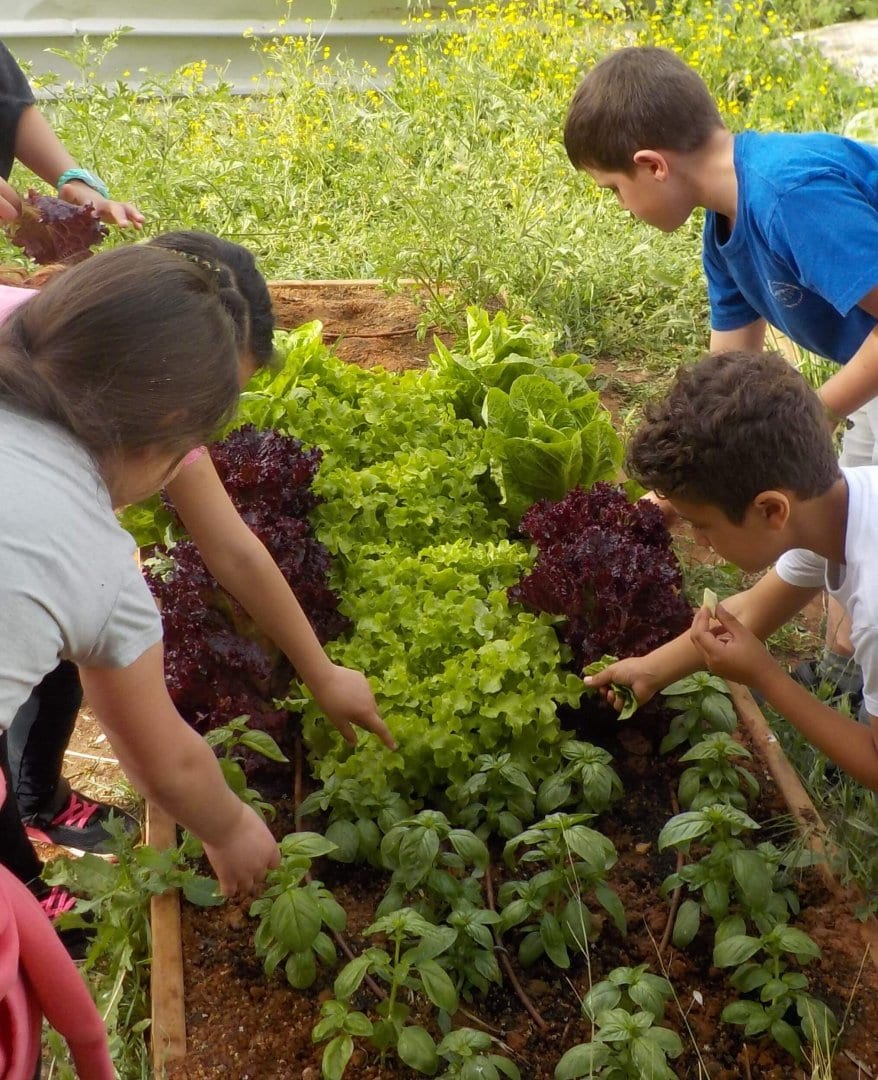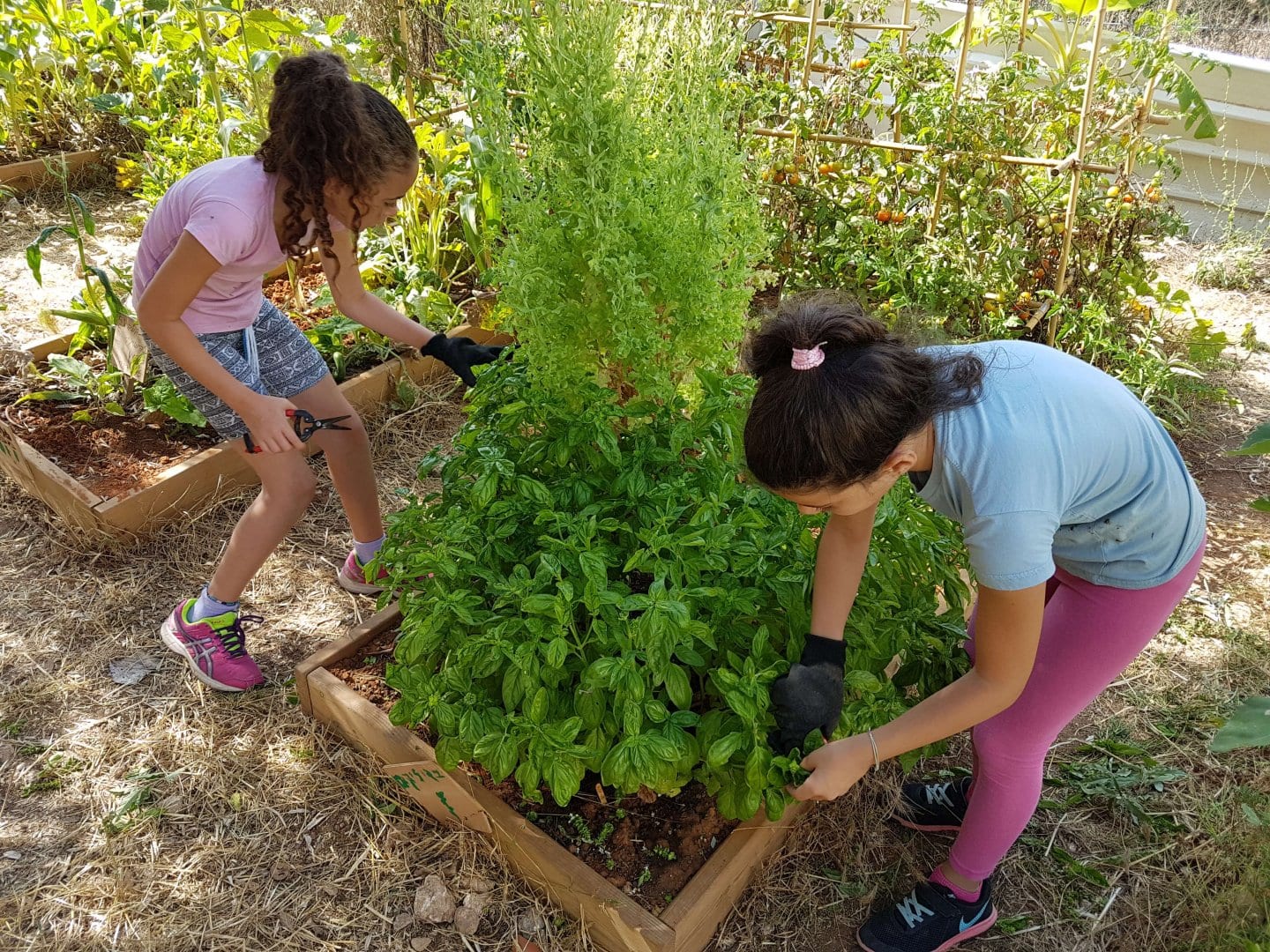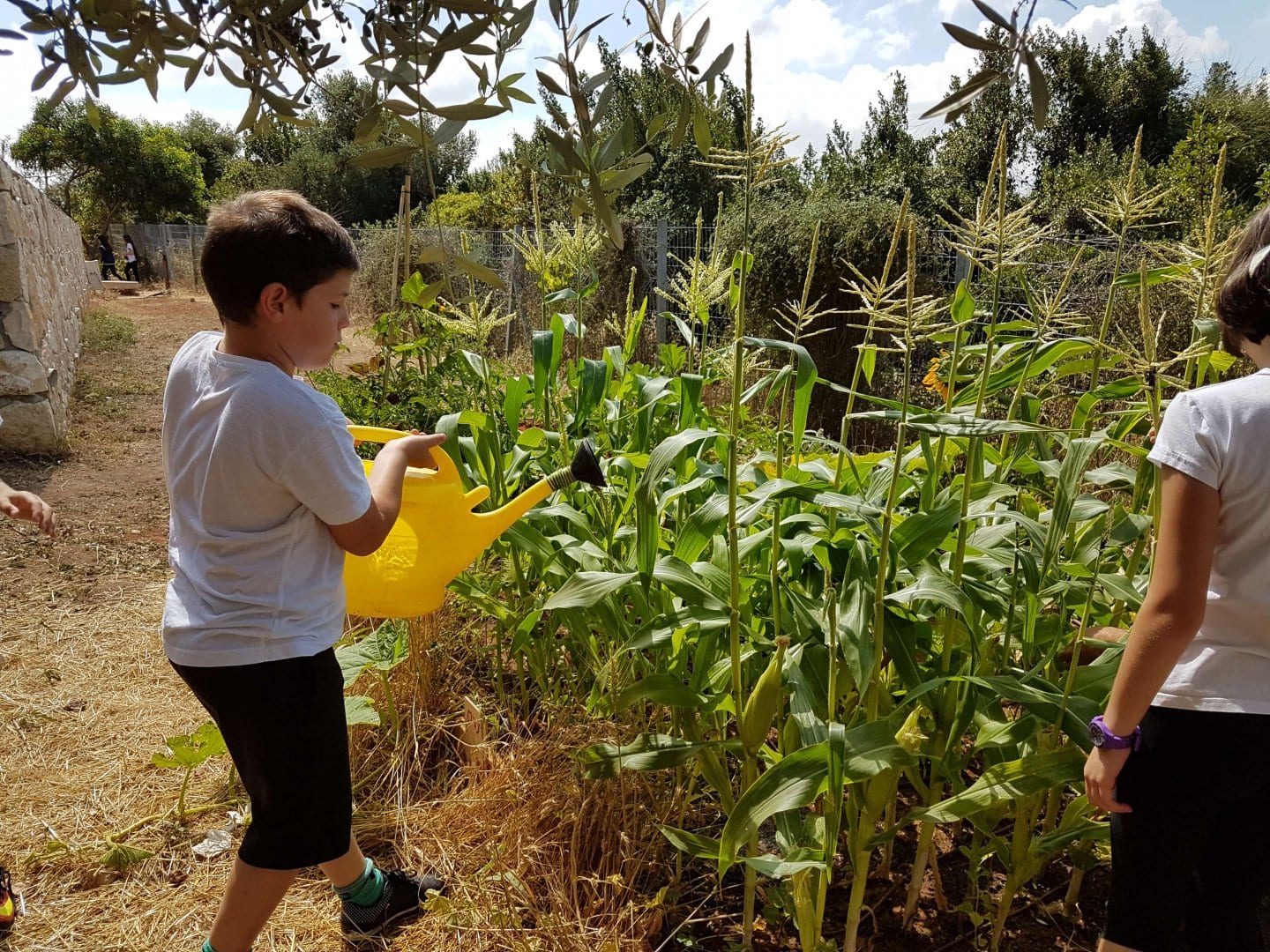A Garden that Grows Children
Alongside the vegetables that grow in the generous garden at Hachita school in Zikhron Ya’akov, children also grow, getting dirty and sweaty and developing curiosity. This is meaningful learning at its best.
 News and Events
News and Events
Alongside the vegetables that grow in the generous garden at Hachita school in Zikhron Ya’akov, children also grow, getting dirty and sweaty and developing curiosity. This is meaningful learning at its best.

In the lower, southern part of Hachita school, right next to the fence that separates between the school and the woodland, grows a vegetable garden, where not only do the plants and vegetables grow, but so do the children. The garden was established and operates within the framework of the ‘Generous Garden’ program run by Ramat Hanadiv for the last two years in the region of the Partnership for Regional Sustainability. Activity in the garden is based on components of meaningful learning, and combines active learning through curiosity, motivation, showing initiative, and providing solutions to the needs of the child. Time spent in natural surroundings and a green environment benefits the children, who return to the classroom following the activity with greater concentration, after having released their energy in the garden.
The garden project is led by Lozan kaiuf, in her first year at the school, as a teacher specializing in science. The 3rd-grade children come regularly to the garden and look after the beds of cucumbers, carrots, lettuces and other vegetables. The children can’t wait for their garden class, and the garden activity does not end when recess begins; they come during recess to care for the plants, to follow their growth and to simply be there.
“This is a hands-on but not necessarily easy project,” says kaiuf, “there is no classroom, no walls; everything is open. I have to adapt the lesson plans and to know how to keep the children close. I work with them and get dirty like they do, and something about this joint work invites a different kind of approach to learning. The garden doesn’t end when the class ends; they come back to it during their free time.
Kaiuf uses the garden to demonstrate ideas from science classes; when they learn about the parts of the plant there is no need for presentations and diagrams, they simply experience the real thing. But not only science is taught in the garden; the garden is a space that facilitates a range of learning options. Activity in the field activates imagination and creativity. Variability in the garden, for example, was described by the children through drawings and they even used materials from nature, such as olives, soil and leaves in order to produce dyes. “The garden also arouses inspiration and facilitates play and imagination. For example, when the children discovered a tunnel in the soil, they made up stories about who lives in the tunnel through drawing and writing,” adds Kaiuf.

I work with them and get dirty like they do, and something about this joint work invites a different kind of approach to learning. The garden doesn’t end when the class ends; they come back to it during their free time.


The garden is intended for all of the school’s children. Kaiuf relates that a number of 8th-grade students come for weekly activity in the garden. They build, hoe, and conduct maintenance activities in the garden. Working together develops interpersonal communication. The opportunity to do something for all, and not just ‘for themselves’ increases their self-worth and feeling of capability. “On the whole, the garden brings successes that are sometimes hard to experience in the classroom. There is space for initiative, independence, understanding the connection between cause and effect, physical work and spending time near nature,” says Kaiuf. “And yes, it’s also an opportunity to dare to risk failure,” she adds.
The physical work in the garden facilitates release of energy and frustration on one hand, and on the other hand, invites moments of tranquility and observation. Many times the children continue working in the garden even after recess begins.
Some 8th-grade children sit and eat sweet strawberries from the garden. A short while ago they were just flowers in the garden bed. Kessem brings a red strawberry toward her mouth, stares at the dots of tiny seeds and enthuses about nature: “It’s amazing how vegetables grow out of a tiny seed.” She tells how she waits for Mondays because “it’s much more fun than sitting in the classroom.”

Daniel talks about the banana cutting that he took from the school garden and planted in the garden at the boarding school where he lives, and how the poppies that he sowed there began to flower. Danny enjoys the physical work: “I use up lots of energy and finish the work exhausted, but it’s worth it because I enjoy it. I wait all week for Monday in the garden,” he says
Agam loves to plant, dig and clean: “It’s relaxing and enjoyable and I feel freer; I love the big olive tree that we nurtured, pruned and fertilized on Tu B’shvat.” She talks about how she built a wooden planter box all by herself for growing potatoes. “Using work tools increased my confidence and my faith in myself,” she adds
During recess the garden gets visitors from all the classes. They pass through it like the blackbird, titmouse and butterfly, checking whether there is something new, perhaps a carrot or pea to pick.
The garden project is fully backed up by the school’s principal, who recognizes its benefits. Kaiuf’s dream is that the garden will be used by other teachers who will come to the garden to teach, each one in his/her own field. Kaiuf is assisted by Eitan Farber from the staff of Ramat Hanadiv. “One of my good memories from school is of the vegetable garden that we set up. I am happy that such an experience is being given to children today as well,” says Farber.
The ‘Generous Garden’ program, led by Ramat Hanadiv, operates in other schools throughout the region of the Partnership for Regional Sustainability: three schools in Jisr al-Zarqa – Al Salaam, Al Shata’a and Al Manara, Ort School in Binyamina, Keshet School in Zikhron Ya’akov and Eshkolot School in Binyamina.
Any question? We will be glad to help